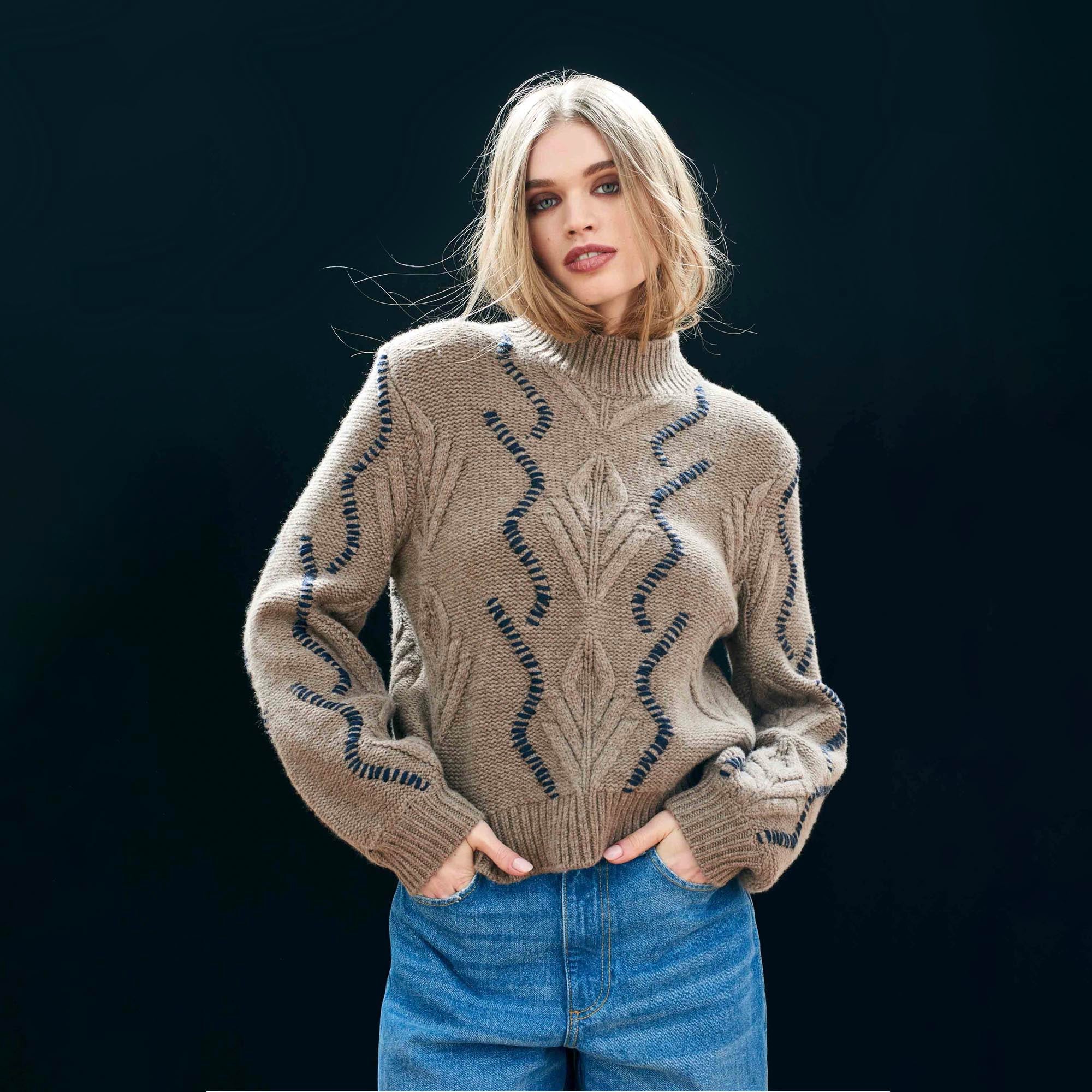We will get on to visible mending in just a moment but first of all, a bit of background. Cashmere is a naturally sustainable fibre that could come from almost anywhere in the world. In fact, you could probably keep a couple of adorable goats in your own back garden – but this wouldn’t give you the luxurious, fine cashmere that we use for all of Jumper 1234’s knitwear. You see, it’s the climate that matters. The finest cashmere comes from Mongolia, where the free ranging goats grow a magnificent thick undercoat of the softest, finest, longest fibres to resist the bitingly cold Himalayan winters, keeping them warm and toasty through until spring. Goats in less harsh climates may produce a winter undercoat but the fibres are coarser and shorter. These short fibres are not as soft or hard wearing. Not what we want for our lovely, luxury jumpers. We want soft fibres that last without pilling.
To shear or comb?
In early summer, the goats begin to shed their wonderful undercoat and it is only then that they are shorn and we can use the fleece, just like you would with sheep’s wool. By the way, it is a common misconception that it is kinder to comb out the undercoat. This pulls at the skin and is painful for the goat. Think back to when your mum used to brush your hair. This is why our Mongolian herdsmen always shear their goats.

Sustainability one step at a time
You may remember we spoke to the lovely Berni Yates recently (designer of our iconic rick rack yoke jumper). Like us, she is a passionate advocate of sustainability in the fashion industry but recognises that 100% sustainability doesn’t happen overnight. It is the result of many small steps and finding innovative ways of changing how we do things.
“For me, it’s about understanding and respecting communities. Not just taking but giving back. It can’t happen overnight.”
Berni Yates

Designed in London. Crafted in Mongolia
We have spent years building strong relationships with our herdsmen who sell their cashmere at a fair price. They rely on this income to sustain their families and their traditional way of life. So, our fabulous cashmere fibres then go to skilled artisans and manufacturers in the region, thus supporting not only the herdsmen but wider communities in Mongolia. We don’t waste air miles sending our cashmere elsewhere to be manufactured, especially when these artisans have years of experience working with the finest cashmere. They take our contemporary British designs and transform them into wearable works of art. This combination of the finest fibres and talented craftsmanship guarantees that all our fabulous knitwear is hard wearing and will retain its look and feel for years to come.
Visible Mending
Unfortunately, even the hardest wearing of garments is not immortal. Stains, frays, accidents and everyday wear and tear will happen. But if you’ve just caught the front of your favourite cardigan or spilled red wine on your can’t-live-without, go-to sweater, don’t even think of throwing it away or giving it to the cat! Turn an accident into a statement.
Make new and mend

Visible mending is one of the newest sustainable fashion initiatives. The words ‘darning’ and ‘embroidery’ may not conjure up images of sartorial elegance but search for Visible Mending on Instagram or Pinterest and you will see just what can be achieved with a bit of thread and imagination. Visible mending is an inventive way to repair, recycle and customise garments. You will see it on jeans, jackets and jumpers – and even in the pages of Vogue.
Tessa the Dresser

As part of our ongoing mission to keep Jumper 1234 as sustainable as possible, we are now offering a Visible Mending service to our customers to help you extend the life of your favourite pieces. Our expert visible mending partner Tessa the Dresser will take those stains, marks or holes and skillfully stitch over them with a choice of statement designs. Your jumper will be reborn. Beautiful, unique and ready for many more years to come. It is just one small step in our sustainability mission but every little counts. So don’t send your tired, frayed knitwear to landfill. Send it to us.




